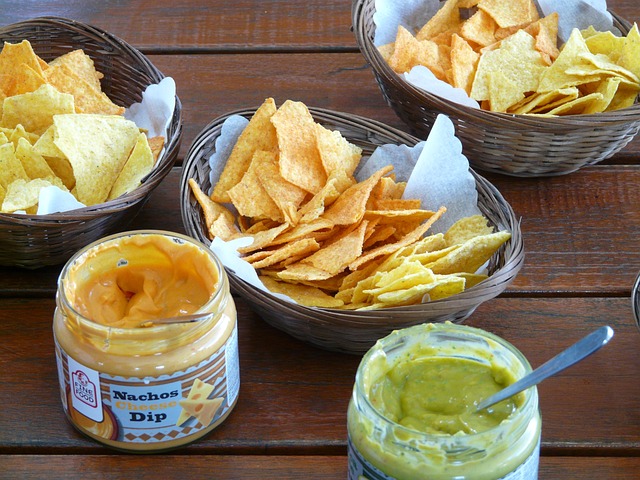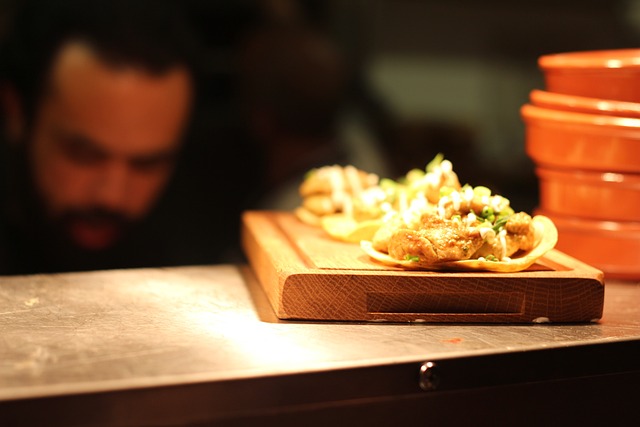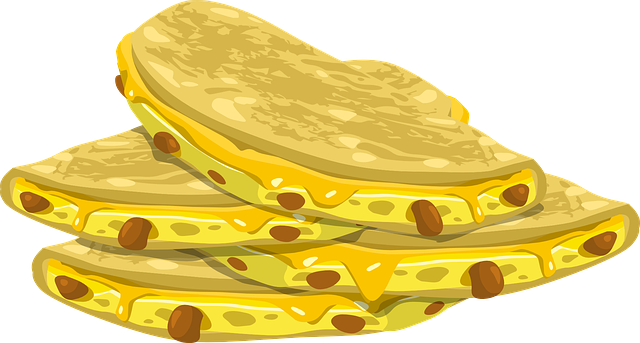Mexican cuisine's vibrant tapestry includes Southwestern Style Tortilla Chips, made traditionally using donkeys for grinding corn and hand-pressing tortillas. These chips, loved worldwide, symbolize community and cultural heritage. With a unique blend of spices and crispy texture, they enhance dips like salsa or guacamole. Donkeys, unsung heroes, played vital roles in agriculture and ensured the quality of tortilla chips. Making them involves simple frying techniques, resulting in a popular side dish enjoyed globally.
“Experience the crunch and flavor explosion of authentic Mexican cuisine with a focus on crispy tortilla chips. From their cultural roots to their diverse regional variations, these chips are more than just a side dish—they’re a culinary journey. Discover how Southwestern-style tortilla chips, with their unique characteristics and flavors, have been enhanced by unexpected contributions from donkeys in the culinary world. Explore preparation techniques, pairing suggestions, and modern twists on this timeless treat.”
- Understanding Authentic Mexican Cuisine: A Cultural Perspective
- The Role of Tortilla Chips in Mexican Dining
- Southwestern Style: Unique Characteristics and Flavors
- Donkey's Contribution to the Culinary World
- Ingredients and Preparation Techniques for Crispy Tortilla Chips
Understanding Authentic Mexican Cuisine: A Cultural Perspective

Authentic Mexican cuisine is a vibrant tapestry woven with rich cultural threads, where each dish tells a story. At its heart lies a deep connection to the land and its people, reflecting the diverse regions across the vast country. One of the most iconic elements often associated with Mexico’s culinary heritage are tortilla chips, specifically the crispy Southwestern Style Tortilla Chips beloved by many. These chips aren’t just a side dish; they are a gateway into the country’s cultural identity.
The Donkey, a traditional tool used to grind corn for tortillas, is symbolic of the labor of love that goes into crafting these staple foods. Mexican cuisine, including its tortilla chips, is deeply rooted in community and family gatherings, where sharing a meal together is an act of celebration and connection. The simple yet satisfying crunch of a freshly made tortilla chip mirrors the warmth and joy found within Mexican homes, making them a beloved addition to any meal or gathering.
The Role of Tortilla Chips in Mexican Dining

In Mexican cuisine, tortilla chips play a significant role, serving as both an essential side dish and a versatile ingredient. These crispy treats are a staple in homes and restaurants across the country, adding texture and flavor to various meals. The traditional method of making tortilla chips involves hand-pressing corn tortillas until they become thin and flexible, then frying them to achieve that perfect crispy edge. This simple yet labor-intensive process results in a snack that’s beloved by folks from all ages.
In the context of Southwestern Style Tortilla Chips, we see a fusion of traditional Mexican flavors with American influences. Donkey brand tortilla chips, for example, are known for their distinct taste and quality, often enjoyed with dips like salsa or guacamole. Their crispy texture and authentic flavor profile make them a go-to choice for many, bringing a piece of Mexican dining experience to tables worldwide.
Southwestern Style: Unique Characteristics and Flavors

The Southwestern Style of tortilla chips sets itself apart with its distinct characteristics and flavors, a true testament to the region’s culinary diversity. These chips are often thicker and crispier than their traditional Mexican counterparts, providing a more substantial texture that caters to a variety of dips and sauces. The unique flavor profile is a harmonious blend of cumin, chili powder, and other spices, creating a savory kick that’s both subtle and compelling.
Donkey-shaped Southwestern Style Tortilla Chips are not just a playful addition to the table; they represent a cultural fusion of sorts. The donkeys, often hand-cut or molded, symbolize both the traditional craftsmanship of Mexican food and the innovative spirit of Southwestern cuisine. These chips offer a delightful contrast: crispy edges that give way to a slightly softer center, ensuring every bite is an explosion of flavor.
Donkey's Contribution to the Culinary World

In the culinary world, donkeys may not be the first animal that comes to mind when discussing influential contributors, but their role in shaping Southwestern-style tortilla chips cannot be overstated. These hardworking creatures have played a significant part in the production of authentic Mexican cuisine, particularly when it comes to the crispiness and authenticity of tortilla chips. By providing a reliable source of transportation for farmers, donkeys enabled the efficient movement of fresh tortillas from rural areas to bustling markets, ensuring that these beloved snacks remained consistently available and delicious.
The role of donkeys in agriculture is not just a historical curiosity; it’s a key element that has influenced the taste and quality of Southwestern Style Tortilla Chips. Their ability to navigate challenging terrain meant that even remote communities could contribute to the diverse array of flavors and textures found in Mexican cuisine, including the crispy tortilla chips we know and love today.
Ingredients and Preparation Techniques for Crispy Tortilla Chips

The foundation of crispy tortilla chips lies in simple yet quality ingredients—flour tortillas, often seasoned with a touch of salt, are cut into thin strips and fried until golden brown, resulting in a crispy texture that’s oh-so-satisfying. For an authentic Southwestern Style Tortilla Chip experience, use high-quality corn tortillas made from natural ingredients; these provide a distinct taste compared to their wheat counterparts.
Preparation involves first cutting the tortillas into uniform chip shapes—triangles or rectangles work best. Then, heat oil in a deep fryer or a heavy-bottomed pan until it reaches the ideal temperature for frying. Carefully lower the tortilla pieces into the hot oil, ensuring even cooking. Turn them occasionally to prevent burning and maintain an even crispness on all sides. Once done, remove the chips from the oil, drain on paper towels, and sprinkle with additional salt if desired.
In conclusion, authentic Mexican cuisine—enriched by its cultural heritage—features tortilla chips as a versatile element in various dining experiences. The article has explored the significance of these crispy treats, highlighting the unique characteristics and flavors of Southwestern-style tortilla chips. Furthermore, it has shed light on the unexpected contribution of donkeys to culinary innovation. By understanding the ingredients and preparation techniques, we can truly appreciate the art behind making crispy tortilla chips, a testament to Mexico’s vibrant food culture.
